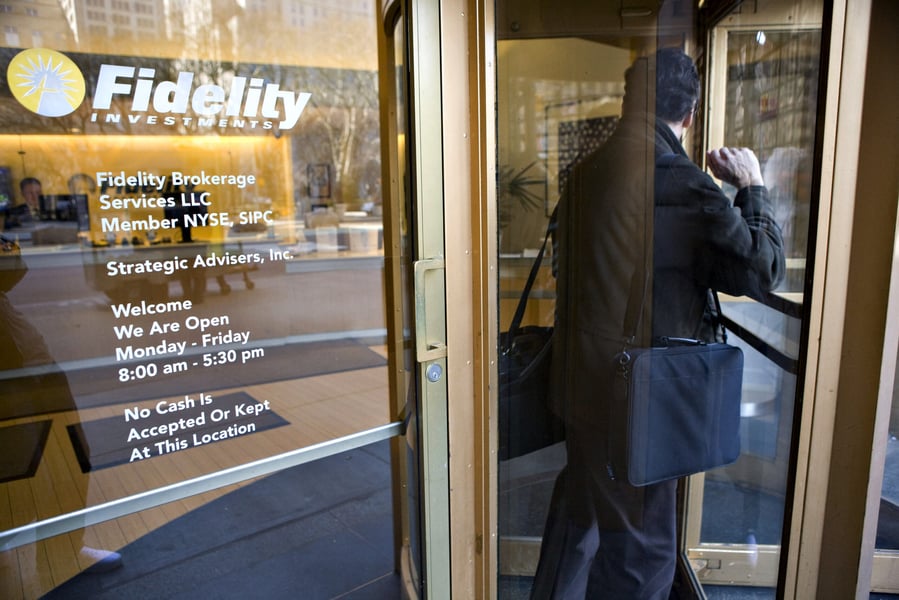

Fidelity Investments' bold move of launching a suite of mutual funds charging zero fees in August and September of 2018 looked at the time like a classic marketing gimmick.
But after nearly three years of keeping the funds' fees at zilch for retail investors on the Fidelity platform, the combined assets in the four funds are closing in on $18 billion. Yet no other mutual fund provider has yet tried to copy Fidelity’s strategy.
“The absence of a fee is clearly getting retail money in the door,” said Todd Rosenbluth, director of mutual fund and ETF research at CFRA.
To be clear, the no-fee funds are passively managed, broad market index funds that offer the kind of exposure that could be found elsewhere for just a few basis points. Fidelity isn’t really giving up a lot in the way of fees, but it is giving up something.
For example, if the $10 billion Fidelity Zero Total Markets Index (FZROX) charged just 4 basis points like the comparable Vanguard Total Stock Market Index (VTSAX), Fidelity would be collecting $4 million in annual fees from investors in that fund.
Applying a hypothetical 4-basis-point fee across all four funds, including the $4 billion Fidelity Zero Large Cap Index (FNILX), the $2.6 billion Fidelity Zero International Index (FZILX), and the $1.2 billion Fidelity Zero Extended Market Index (FZIPX), the total annual fees collected from the suite would be around $7.2 million.
Granted, $7.2 million might look like small potatoes to a global enterprise like Fidelity that manages $10.4 trillion, but as Rosenbluth put it, “$7.2 million is not nothing.”
For Fidelity, the motive is obvious: Use zero fees to get retail investors on the platform and then expand the relationship with those investors to allocate assets into other products that do charge fees.
A Fidelity representative was not available for an interview, but emailed comments from Scott O’Reilly, head of index, sector, thematic and factor products at Fidelity, confirmed that the strategy is working as planned.
“We’ve heard very positive feedback from our clients,” said O’Reilly, who added that the zero-fee funds have “helped us achieve our goals of building relationships with new customers and forming deeper connections with existing clients.”
In conjunction with the launch of the suite of zero-fee funds, Fidelity provided further enticement to retail investors by offering them zero minimums to open accounts, zero account fees and zero domestic money movement fees.
Another curious aspect the $18 billion that has flowed into the four mutual funds is the funds are still a few months shy of the coveted three-year mark, which is the point at which funds start earning performance-based star ratings from fund trackers like Morningstar.
That same asset-flow phenomenon has also been emerging in the ETF space, where transparent indexed strategies are gathering assets right out of the blocks.
Low fees and fee wars continue across the asset management space, as was shown last week by Invesco’s launch of two exchange-traded funds that track indexes being abandoned by competitor BlackRock. Invesco is hoping to capture a share of the $18 billion potentially in motion by offering investors a six-month fee waiver.
While the fee lever is being pulled in various forms across financial services, it appears there are places that some fund providers will not go.
Inquiries to some of the major fund platforms prove that Fidelity is likely to hold this patch of turf alone for a while.
A spokesperson for The Vanguard Group said there are no plans to launch zero-fee mutual funds. A T. Rowe Price Associates representative declined to comment for this story, and representatives from Charles Schwab Corp. did not respond to a request for comment.
“Zero fees are still a marketing opportunity to bring investors onto the platform, and it’s a competitive advantage to say you can invest for free with us,” Rosenbluth said. “The amount of marketing advantage this has or could have likely offsets whatever they’re giving up in a few basis points of fees.”

Experts flag potential risks for seniors as headline readings for July obscure higher jumps in key price categories.

Emerson Equity and its advisor, Tony Barouti, were likely the largest sellers of defunct GWG L bonds.

The President's comments on social media came after analysts sounded notes of caution on the impact on consumer prices.

The order from the White House would bend fiduciary principles to benefit the alternative investments industry alone, argues the Institute for the Fiduciary Standard.

A federal judge denied CEO and managing principal James Lukezic's urgent bid to halt FINRA discipline over $1.1 million in trades, putting industry compliance under the microscope.
Orion's Tom Wilson on delivering coordinated, high-touch service in a world where returns alone no longer set you apart.
Barely a decade old, registered index-linked annuities have quickly surged in popularity, thanks to their unique blend of protection and growth potential—an appealing option for investors looking to chart a steadier course through today's choppy market waters, says Myles Lambert, Brighthouse Financial.
